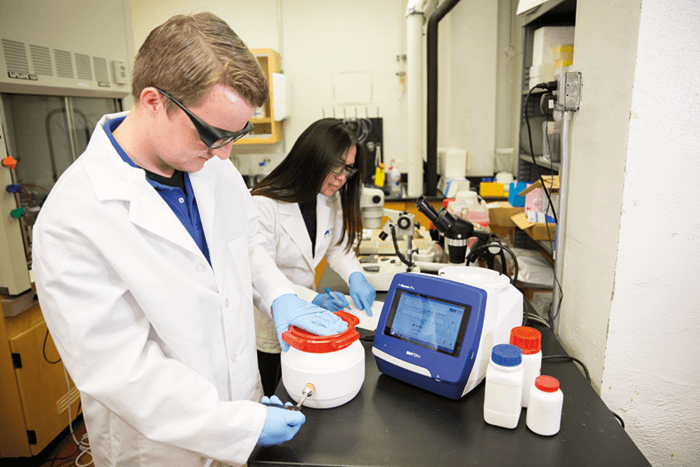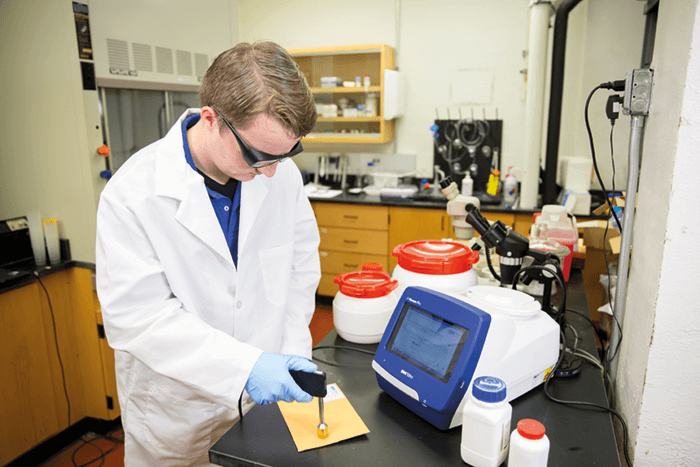The problem
Raman spectroscopy, now widely available in handheld and portable formats, is used for measuring the molecular fingerprint of a sample, and is particularly useful for rapid, nondestructive material identification. The specific molecular information supplied by a Raman spectrum has proved invaluable in chemical, material, pharmaceutical and biomedical research, and in medical diagnostics. But the technique has limitations – samples can only be measured directly, or through transparent containers. Raman identification through opaque packaging would make the technology easier to use for incoming raw materials in warehouses and for first-responders, customs agents and others who need to rapidly identify materials without touching them. In addition, conventional Raman typically has a very small sampling area with a high power density at the laser focal point on the sample, which means that only a limited portion of a sample is measured, and samples may heat or burn. We reasoned that if we could design a system that overcomes these issues, Raman could be used more widely and give more repeatable results for heterogeneous samples, such as mixed powders or natural products.





